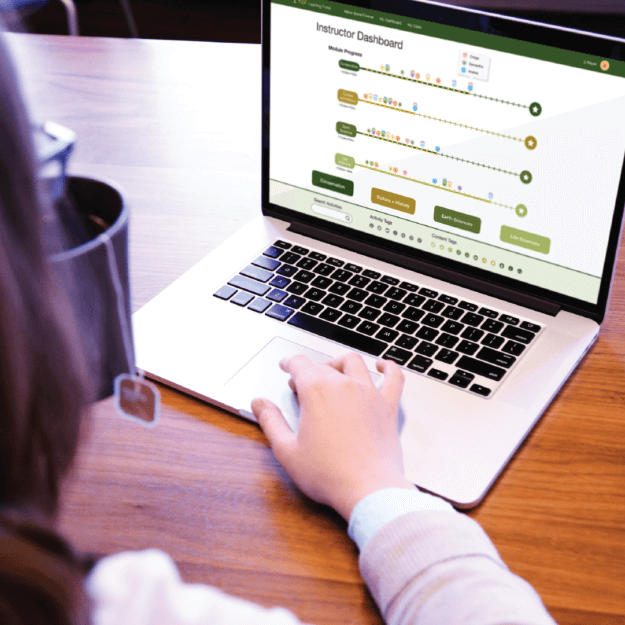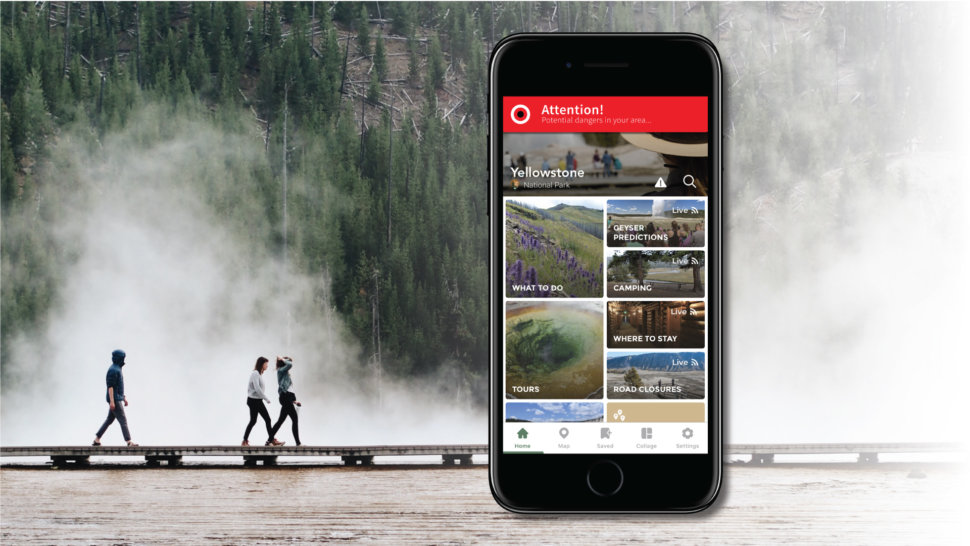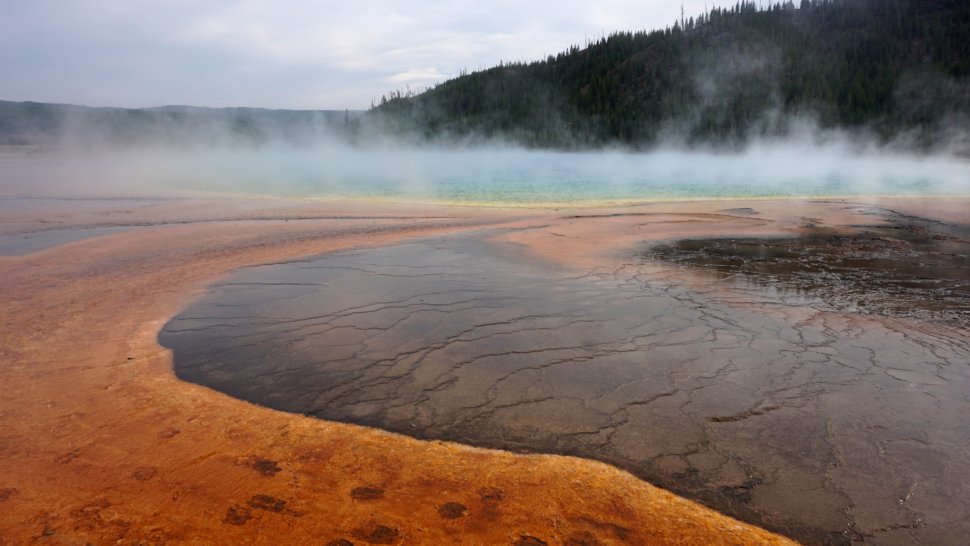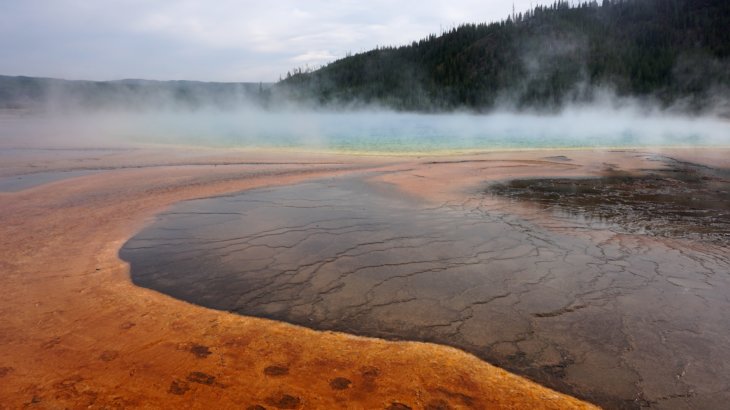This year, a group of students studying multi-disciplinary design worked with Yellowstone Forever, the nonprofit arm of Yellowstone National Park. These students traveled to Yellowstone National Park to interview rangers and staff and get inspiration for their own design. They then developed a diverse array of projects designed to enhance the experience of traveling to Yellowstone. Here is a sampling of those student projects:
Ranger+
 While millions of visitors enjoy Yellowstone every year, certain groups are less able to enjoy the outdoors. Emme Nelson researched this issue, and found that marginalized communities experience more barriers in visiting national parks. This has been an issue since Yellowstone became the first national park and the first park rangers were exclusively male. Nelson wanted to develop a project to help park goers who were not white, male, able-bodied or wealthy. She said, “I wanted to create a platform that would allow people of all different backgrounds and different communities to engage with the outdoors in a way that is beneficial to them.”
While millions of visitors enjoy Yellowstone every year, certain groups are less able to enjoy the outdoors. Emme Nelson researched this issue, and found that marginalized communities experience more barriers in visiting national parks. This has been an issue since Yellowstone became the first national park and the first park rangers were exclusively male. Nelson wanted to develop a project to help park goers who were not white, male, able-bodied or wealthy. She said, “I wanted to create a platform that would allow people of all different backgrounds and different communities to engage with the outdoors in a way that is beneficial to them.”
Nelson created RANGER+ to provide a physical space for underrepresented groups within national parks. Here, people could find inexpensive gear rentals, educational opportunities and community events. She hopes RANGER+ could foster discussion and address challenges within the parks system. Currently, she is beginning to develop a print publication and social media platforms to complement the physical locations.
Nelson hopes to see better representation, greater access and more diversity within the national parks and the outdoor community in general. She said, “You can’t be what you can’t see,” and with RANGER+, she hopes that more people can see themselves in Yellowstone.
Distance Learning
 When Steven Calhoun visited Yellowstone, he realized that many do not have physical access to the park’s beauty and wildlife. He wanted to use Yellowstone to educate others, even if they couldn’t visit the park themselves.
When Steven Calhoun visited Yellowstone, he realized that many do not have physical access to the park’s beauty and wildlife. He wanted to use Yellowstone to educate others, even if they couldn’t visit the park themselves.
Calhoun created a distance-learning portal for students across the country. His content was targeted at fourth to sixth graders. He chose this age group because, “Their minds are still kind of malleable. They are still developing their moral compasses and are trying to figure out life for themselves beyond what their schools or parents are teaching them.”
Calhoun developed modules: plants and wildlife, conservation, and culture and history of Yellowstone. He wanted to make his portal more interactive than a typical classroom lecture. The content is based on what he calls “environmental design thinking,” where students learn an idea, develop a hypothesis and come to their own conclusions about source material. Students could choose lessons based on their own interests, so each participant would have a totally unique learning experience.
Calhoun hopes these lessons can use the environment and culture of Yellowstone to teach valuable lessons about science, natural history and conservation. He has already conducted user testing, and students have excitedly asked for more content. He hopes to continue developing this platform, and Yellowstone Forever has asked for his assistance in educational and technological development.
Visitor Communication
 Christian Pugsley noticed that many tourists visiting Yellowstone from foreign countries struggled with a communication barrier, especially with signs and information throughout the park. This raised safety concerns — signs often warned against wild animals or dangerous land features — and detracted from visitors’ experiences.
Christian Pugsley noticed that many tourists visiting Yellowstone from foreign countries struggled with a communication barrier, especially with signs and information throughout the park. This raised safety concerns — signs often warned against wild animals or dangerous land features — and detracted from visitors’ experiences.
Pugsley audited existing signage in the park to develop new solutions. He classified information into three main categories: prohibitive, cautionary and informative. After auditing signage from the top visiting countries, he gave each type of message an assigned color and shape, creating easy and recognizable visual shorthand for visitors.
Pugsley’s solution is compatible with the current Yellowstone app. He incorporated push notifications, NFC touch-to-read technology and location-based technology to provide up-to-date, easily accessible information to visitors in their native language. With GPS technology, the system is able to send notifications to cell phones within a certain radius, warning them of nearby danger. He also developed beacons that could be scanned on a phone to provide additional information via NFC technology. His design, which does not require cell phone service or Wi-Fi, could be implemented throughout the park with very little effort or resources. Pugsley hopes his ideas will be integrated into existing park infrastructure, allowing all visitors to have a safe and enjoyable visit in Yellowstone.
Translating Research
 Jordan Rasmussen was fascinated by thermophiles, bacteria that colored many of the springs in Yellowstone. But when he tried to learn more about them, he hit roadblocks. The research on thermophiles was so full of difficult scientific language he could hardly understand it.
Jordan Rasmussen was fascinated by thermophiles, bacteria that colored many of the springs in Yellowstone. But when he tried to learn more about them, he hit roadblocks. The research on thermophiles was so full of difficult scientific language he could hardly understand it.
Rasmussen realized that many people like him wanted to learn more about research, but had a hard time grasping dense scientific literature. When he talked to researchers, he could feel their passion for research, and he wanted to translate this enthusiasm to the general public.
Rasmussen is developing a platform, including a website and app, that explains the research conducted on public lands. (Currently, there are about 150 research projects every year in Yellowstone.) He created navigation tools that allowed people to look up research by location, park, or topic. Research projects were paired with an individual profile, which described the concept in concrete, simple terms, explained the project’s relevance, introduced the research team and linked to places to find further information.
Rasmussen hopes his work will help people identify and engage with scientific advancements in public lands. His project has the power to educate people both inside and outside the park’s physical boundaries.
More articles like this in ‘Student Innovation @ the U!’
Find this article and a lot more in the 2019 “Student Innovation @ the U” report. The publication is presented by the Lassonde Entrepreneur Institute to celebrate student innovators, change-makers and entrepreneurs.




